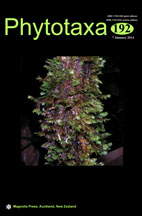Abstract
Ficus krishnae considered as native to India is very unique among all species in the genus as it has peculiar leaves generally with cone-shaped structure at base and leaflet like appendages on the petiole. These both features are tremendously variable within the species. The taxonomic status of F. krishnae is still uncertain as sometimes it is treated as subspecies or conspecific to its closest relative F. benghalensis. Many mythological stories regarding the formation of cup in the leaves are also associated in India and hence the plants of the species are considered sacred and worshiped. The merger of F. krishnae with F. benghalensis makes the latter quite heterogeneous and at the same time it may not be acceptable in the society at large as with the former the religious faith of the people is attached. Earlier it was believed that F. krishnae differs from F. benghalensis only in cup-shaped leaves. But critical examination of large number of specimens gathered from different places and available information reveal that F. krishnae distinctly differs from F. benghalensis not only in cup formation in leaves, rather also in height of the plants, aerial roots, stipules, petiole and its leafy appendages and ostiolar bracts of the receptacle, in addition to differences in chromosome, DNA contents, stomatal and parenchymatous cells and nodal anatomy. Based on morphological, anatomical and cytological evidences F. krishnae is again reinstated here as a correct species. The correct citation of the species has been provided and discussion has been made on the variation pattern of the leaves. The detail description of the species along with line drawing illustrations and colour photographs has been added.

